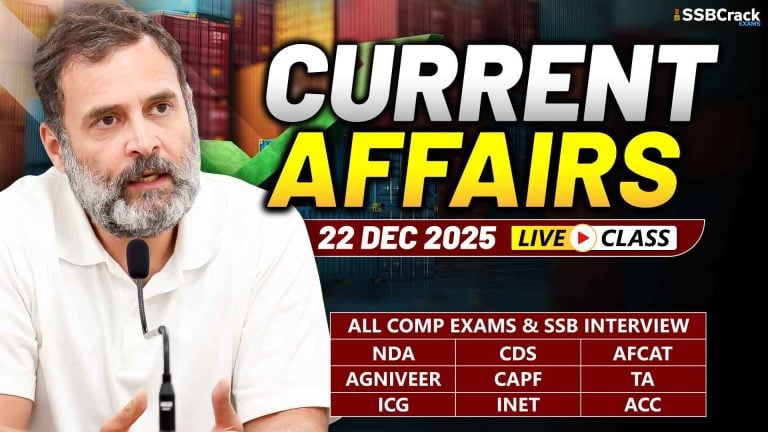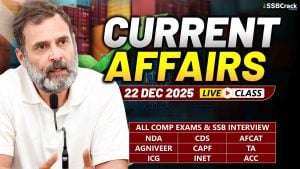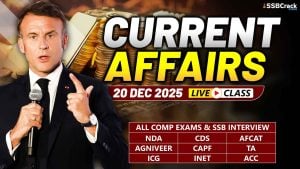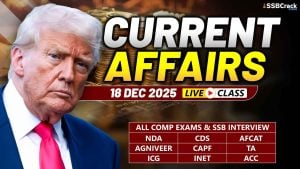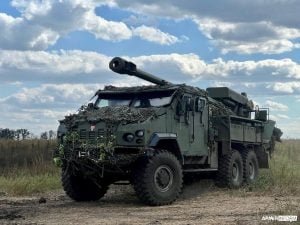Ramcharitmanas, Panchatantra, and Sahṛdayaloka-Locana have been named to UNESCO’s Memory of the World Asia-Pacific Regional Register. This is a significant achievement for India as it has been recognized for its rich literary heritage and cultural legacy. The inclusion of these three literary masterpieces on the register highlights the importance of recognizing and safeguarding the diverse narratives and artistic expressions that shape our shared humanity.
Ramcharitmanas, Panchatantra Get UNESCO Recognition
Why In News
- Ramcharitmanas, Panchatantra, and Sahṛdayaloka-Locana have been named to UNESCO’s Memory of the World Asia-Pacific Regional Register. This is a significant achievement for India as it has been recognized for its rich literary heritage and cultural legacy. The inclusion of these three literary masterpieces on the register highlights the importance of recognizing and safeguarding the diverse narratives and artistic expressions that shape our shared humanity.
All You Need To Know
- Ramcharitmanas, Panchatantra, and Sahṛdayaloka-Locana are timeless works that have had a profound impact on Indian literature and culture. These literary works have transcended time and place, leaving an indelible mark on readers and artists both within and outside India.
- They are sure to continue to inspire and enlighten future generations.
- The inclusion of these three works on the register is a testament to the efforts of the Indira Gandhi National Centre for the Arts (IGNCA) in promoting and preserving India’s cultural heritage.
- IGNCA played a vital role in securing this historic moment during the 10th meeting of the Memory of the World Committee for Asia and the Pacific (MOWCAP) in Ulaanbaatar, 38 representatives from member states, along with 40 observers and nominees, gathered to discuss the nominations.
MoWCAP
- MoW (Memory of the World) Program was launched by the United Nations Educational, Scientific and Cultural Organization (UNESCO) in 1992.
- MOWCAP was set up in 1998 during its First MOWCAP General Meeting.
- MOWCAP embraces the Asia Pacific region of 43 countries – one of five UNESCO regions across the globe.
- MOWCAP maintains an Asia/Pacific Regional Register of the MoW documentary heritage, a listing of the documentary heritage of influence in the Asia/Pacific region.
- MOWCAP is the authority that approves inscriptions on the Asia/Pacific MoW Register. It assesses nominations from members through its Asia/Pacific Register Subcommittee.
- Normally, inscriptions on the Asia/Pacific Register are made every two years.
Ramcharitmanas
- Authored by 16th century Indian poet Goswami Tulsidas, ‘Ramcharitmanas’ is an epic poem that narrates the life of Lord Rama.
- It is based on the Sanskrit epic Ramayana and is written in the Awadhi dialect of Hindi.
- The choice to write in Awadhi reflects the Bhakti movement’s emphasis on devotion and the effort to make religious texts accessible to a wider audience.
- The poem is divided into seven chapters, or Kandas, that tell the story of Lord Ram from his birth to becoming the King of Ayodhya.
- The poem is also called Tulsikrit Ramayan (literally, The Ramayan composed by Tulsi or, loosely, The Ramayan of Tulsidas). Hanuman Chalisa is a combination of 40 verses from the same epic.
Panchatantra
- The Panchatantra is a collection of ancient Indian animal fables that dates back to at least the 3rd century BCE.
- Originally written in Sanskrit by Vishnu Sharma.
- Its stories are crafted as simple yet vibrant narratives that aim to impart practical life lessons through the interactions of anthropomorphized animals.
Sahrdayaloka-Locana
- Sahrdayaloka-Locana is a Sanskrit treatise on poetics written by Jagannatha Paṇḍitaraja in the 17th century.
- It is considered one of the most important works of Sanskrit literary criticism.
- The text discusses the concept of “Sahrdaya“, which refers to a sensitive or discerning reader or critic.
Other Listings From India In MOW Register
- The I.A.S. Tamil Medical Manuscript Collection (1997)
- Archives of the Dutch East India Company (2003)
- Saiva Manuscript in Pondicherry (2005)
- Rigveda (2007)
- laghukālacakratantrarājatikā (Vimalaprabhā) (2011)
- Tarikh-E-Khandan-E-Timuriyah (2011)
- Shāntinātha Charitra (2013)
- Gilgit Manuscript (2017)
- Maitreyayvarakarana (2017)
Conclusion
- It is a significant achievement for India, as it has been recognized for its rich literary heritage and cultural legacy.
- The inclusion of these three literary masterpieces on the register highlights the importance of recognizing and safeguarding the diverse narratives and artistic expressions that shape our shared humanity.
- 20th ASEAN-India Summit & 18th East Asia Summit Highlights
- Manipur Police Register Criminal Case Against Assam Rifles
- Pakistan’s Ex-PM Imran Khan Jailed For 3 Years In ‘Toshakhana Case’
- Four Years After Removal Of Art 370: How Is The Actual Situation In Kashmir?
- Putin’s Critic Alexei Navalny Sentenced To 19 More Years In Prison
- Delhi Services Bill Tabled In Lok Sabha: Govt Of NCT Of Delhi (Amendment) Act, 2023
- Gurugram Nuh Violence: How A Religious Procession Turned Into A Communal Clash
- Govt Imposes Import Restrictions On Laptops, Tablets, Computers
- How Climate Change Is Altering The Colour Of The Oceans?
- New IPCC Assessment Cycle Begins: Why Is It So Significant?
- Difference Between NATO Vs Russia? [Explained]
- Italy Regrets Joining China Belt & Road Initiative (BRI)
- What Is Doping: Why Is It Banned In Sports?
- India Tiger Census 2023: India Is Now Home To 75% Of Tigers In The World
- Military Coup In Niger – President Detained, All Institutions Suspended
- No-Confidence Motion Against PM Modi’s Government
- Elon Musk’s SpaceX Rocket Punches Hole In Ionosphere
- Israeli Parliament Passes Controversial Law Stripping Supreme Court Of Power
- Significance Of 1999 Kargil War: How It Became A Major Game Changer For Indian Military?
- Controversy Over Movie Oppenheimer Gita Scene: How Are Films Certified In India?
- The Curious Case Of Qin Gang: China’s Foreign Minister Who Went Missing
- Twitter’s Iconic Blue Bird Logo Set To Be Replaced By An X Logo
- India Pulls Out Of Games In China Over Stapled Visas For Arunachal Athletes
- PM Modi Urges Sri Lanka President To Implement 13th Amendment
- India Pulls Out Of Games In China Over Stapled Visas For Arunachal Athletes
- Rajasthan CM Sacks Minister After Remarks Over Crimes Against Rajasthan Women
- Manipur Sexual Assault: Video Sparks Outrage Across The Country
- BRICS Summit 2023 In August: Why Putin Won’t Go To South Africa For The Summit?
- Robert Oppenheimer: The Father Of Atomic Bomb, Impact Of Bhagavad Gita On Him
- Russia-Ukraine Black Sea Grain Deal, Why Russia Has Halted It?
- Henley Passport Index 2023, India Passport Ranked 80th
- Indian Opposition Parties Form ‘INDIA’ Alliance, 26 Parties Unite For 2024
- Britain Joins Asia-Pacific Trade Group ‘CPTPP’ – Biggest Trade Deal Since UK Left EU
- NITI Aayog Report On National Multidimensional Poverty Index
- PM Modi UAE Visit: Highlights & Key Takeaways
- PM Modi’s Visit To France: Highlights & Key Takeaways
- NATO Summit Vilnius 2023: Highlights & Key Takeaways
- Turkey Supports Sweden’s Bid For NATO Membership At Vilnius Summit 2023
- Why ISRO Wants To Explore The Moon’s South Pole: Chandrayaan-3 Mission
- Bengal’s Panchayat Polls Turned Violent: SSB Interview Topic 2023
- First Ever IIT Campus Outside India In Tanzania
- RBI’s Report On “Internationalisation Of Rupee” Why And What Are The Benefits?
- Japan To Release Nuclear Wastewater Into Ocean – Gets Approval From IAEA
- PM Modi Chairs 23rd SCO Summit: Highlights & Key Takeaways
- Israel Raids Jenin Camp: Massive Military Operation In West Bank
- Dutch King Apologizes For Netherlands’ Role In Slavery: A Look At The Dutch Role In History
- Constitutional Crisis In Tamil Nadu: The Tussle Between Governor & DMK Government
- Why Has France Been Engulfed By Protests Again?
- Paris Summit – World Leaders Unite For A New Global Financing Pact
- India Ranked 67th On Energy Transition Index – Sweden On Top Of List By World Economic Forum
- Four Minor Planets Named After Indian Scientists
- NASA Recovers 98% Water From Urine & Sweat On ISS: Breakthrough In Long Space Missions
- ESA Space Telescope Euclid Is All Set For Launch To Observe Dark Side Of Universe
- PM Modi’s Trip To USA: Key Takeaways & Highlights
- PM Modi-Led Yoga Session Creates A New Guinness World Record
- Sajid Mir, The Mastermind Behind 26/11 – His Designation As Global Terrorist Blocked By China
- UN Adopts First Historic ‘High Seas Treaty’ To Protect Marine Life
- International Yoga Day 2023 – How It Was Celebrated Across The World?
- Gender Apartheid – Why Is Afghanistan At Stand Off With UN?
- Gandhi Peace Prize 2021 For Gita Press Why It Triggered A Congress-BJP Brawl?
- The New Pride Flag – Why The Change & What The Colours Signify?
- 48 Years Of Emergency – PM Modi Refers It As India’s Darkest Period In Mann Ki Baat
- Groundwater Extraction Has Tilted Earth’s Spin – How Will It Impact The Climate Change?
- Europe’s Worst Migrant Boat Disaster – 78 Dead, Hundreds Missing Off Greek Coast
- MOVEit Global Hacking Attack – Government Agencies In The USA Targeted
- Karnataka Govt Decides To Repeal Anti-Conversion Law: Why Was The Law Controversial?
- IIT Bombay Among Top 150 Varsities In QS Rankings 2024
- China’s Xi Jinping Backs ‘Just Cause’ Of Palestinian Statehood – Chinese Middle Eastern Diplomacy
- Turkey Won’t Back Sweden’s Bid To Join NATO – Why Is Erdogan Against Sweden’s Application
- UN Report Reveals Chronic Bias Against Women – 25% Of Population Thinks Beating Wife Justifiable
- Zinnai – Space Flower Grown On International Space Station By NASA – Why Is It Significant?
- Who Are Meira Paibis: Manipur’s ‘Torch-Bearing’ Women Activists?
- USA Set To Re-Join UN Cultural Agency UNESCO












